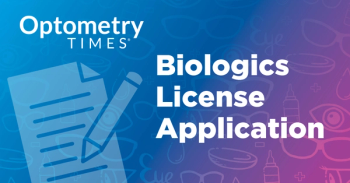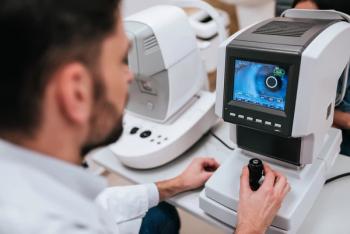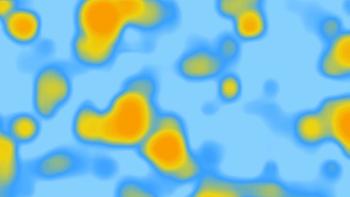
Plasma exchange with albumin could slow Alzheimer’s disease
Study provides encouraging results in the treatment of symptomatic Alzheimer’s patients.
Plasma exchange (PE) with albumin replacement is under investigation as a new therapeutic option for Alzheimer’s disease (AD) on the basis thatamyloid beta protein (Aβ) in the cerebrospinal fluid (CSF) is in dynamic equilibrium with plasma Aβ through the blood‐brain barrier. It is thought that removing Aβ in the peripheral blood would alter the balance to induce CSF Aβ to pass to plasma.
The initial pathological event triggering AD is currently unknown. Autopsy examinations reveal the disease is a neurodegenerative process associated with the accumulation of amyloid plaques in the brain. These plaques appear from extracellular aggregates of brain Aβ protein and the formation of intracellular neurofibrillary tangles of phosphorylated tau (P‐tau) proteins.1
Currently, the only treatments for AD are symptomatic and aimed at modulating neurotransmission, such as acetylcholinesterase inhibitors (AChEI) and N‐methyl‐d‐aspartate receptor antagonists (memantine).2,3 Unfortunately, none of the pharmacologic treatments available have yet been shown to slow down or inhibit the neuronal damage associated with AD.
However, researchers are excited at the discovery that routine removal of PE from an AD patient's plasma would favor elimination of albumin bound Aβ4,5 and possibly other pathogenic elements.6,7
The AMBAR trial
The Alzheimer Management by Albumin Replacement (AMBAR) trial looked at men and women between the ages of 55 and 85 who had a diagnosis of probable AD dementia according to the National Institute of Neurological Disorders and Stroke and the Alzheimer's Disease and Related Disorders Association criteria.8 Enrollment occurred at 41 sites: 19 in Spain and 22 in the United States.
To begin testing, patients were randomly allocated into 4 groups in a 1:1:1:1 scheme. There were 3 PE treatment groups in which participants each received different doses of albumin (Albutein, Grifols) and IVIG (Flebogamma 5% DIF, Grifols). One control (placebo) group underwent a simulated PE treatment through a noninvasive technique (sham) that mimicked PE minus any real fluid replacement.
Patients, caregivers, and raters, including investigators, blindly evaluated outcome measures.
The intervention routine began with a 6‐week period of treatment and weekly periods of conventional therapeutic PE (TPE) with replacement albumin 5 percent for all the active groups through a peripheral (eg, radial/cubital vein) or central access (eg, subclavian/jugular vein), followed by a second 12‐month period of monthly sessions of low volume PE (LVPE) through a peripheral line with replacement albumin 20 percent or IVIG.
Patients received 1 of 3 treatments:
1. infusion of 20 g albumin (“low‐albumin” group)
2. infusion of 20 g albumin alternated with infusions of 10 g IVIG 5% (“low‐albumin+IVIG” group)
3. infusion of 40 g albumin alternated with infusions of 20 g IVIG 5% (“high‐albumin+IVIG” group)
Trial results showed that PE with albumin replacement was feasible and could slow cognitive and functional decline in AD patients over a period of 14 months. This was supported by the effects observed in the co‐primary and global secondary assessment outcomes.
These discoveries have the potential to offer AD patients a new modality of treatment and justify a new trial, according to researchers.
For a comprehensive dive into the study’s results, visit
References
1. Montine TJ, Phelps CH, Beach TG, Bigio EH, Cairns NJ, Dickson DW, Duyckaerts C, Frosch MP, Masliah E, Mirra SS, Nelson PT, Schneider JA, Thal DR, Trojanowski JQ, Vinters HV, Hyman BT; National Institute on Aging; Alzheimer’s Association. National Institute on Aging-Alzheimer's Association guidelines for the neuropathologic assessment of Alzheimer's disease: a practical approach. Acta Neuropathol. 2012 Jan;123(1):1-11.
2. Tariot PN, Farlow MR, Grossberg GT, Graham SM, McDonald S, Gergel I; Memantine Study Group. Memantine treatment in patients with moderate to severe Alzheimer disease already receiving donepezil: a randomized controlled trial. JAMA. 2004 Jan 21;291(3):317-24.
3. Kemp PM, Holmes C, Hoffmann S, Wilkinson S, Zivanovic M, Thom J, Bolt L, Fleming J, Wilkinson DG. A randomised placebo controlled study to assess the effects of cholinergic treatment on muscarinic receptors in Alzheimer's disease. J Neurol Neurosurg Psychiatry. 2003 Nov;74(11):1567-70.
4. Costa M, Ortiz AM, Jorquera JI. Therapeutic albumin binding to remove amyloid-β. J Alzheimers Dis. 2012;29(1):159-70.
5. Milojevic J, Costa M, Ortiz AM, Jorquera JI, Melacini G. In vitro amyloid‐beta binding and inhibition of amyloid‐beta self‐association by therapeutic albumin. J Alzheimers Dis. 2014;38:753‐765.
6. Meca-Lallana JE, Rodríguez-Hilario H, Martínez-Vidal S, Saura-Luján I, Carretón-Ballester A, Escribano-Soriano JB, Martín-Fernández J, Genovés-Aleixandre A, Mateo-Bosch E, Fernández-Barreiro A. Plasmaféresis: su utilidad en esclerosis múltiple y otros procesos desmielinizantes del sistema nervioso central. Estudio observacional [Plasmapheresis: its use in multiple sclerosis and other demyelinating processes of the central nervous system. An observation study]. Rev Neurol. 2003 Nov 16-30;37(10):917-26. Spanish.
7. Weinshenker BG, O'Brien PC, Petterson TM, Noseworthy JH, Lucchinetti CF, Dodick DW, Pineda AA, Stevens LN, Rodriguez M. A randomized trial of plasma exchange in acute central nervous system inflammatory demyelinating disease. Ann Neurol. 1999 Dec;46(6):878-86.
8. McKhann G, Drachman D, Folstein M, Katzman R, Price D, Stadlan EM. Clinical diagnosis of Alzheimer's disease: report of the NINCDS-ADRDA Work Group under the auspices of Department of Health and Human Services Task Force on Alzheimer's Disease. Neurology. 1984 Jul;34(7):939-44.
Newsletter
Want more insights like this? Subscribe to Optometry Times and get clinical pearls and practice tips delivered straight to your inbox.










































